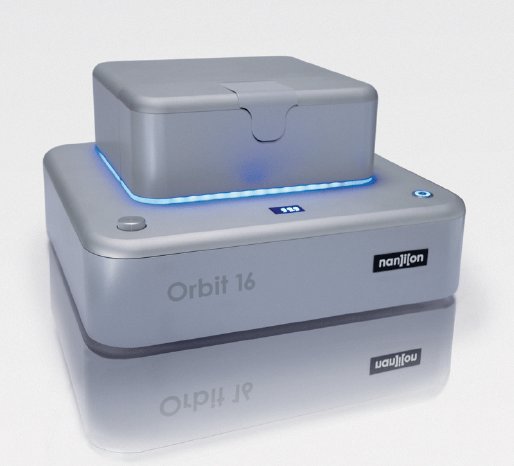Bilayer recording is a well-established technique for in-depth studies of biophysical properties of ion channels and is particularly suited for functional studies on proteins residing in intracellular membranes. Moreover, this technique forms the basis of a host supporting powerful emerging analytical techniques using biological nanopores as molecular sensors.
Despite its proven value, bilayer recording can be very frustrating due to the capricious nature of lipid bilayers which have to be formed manually one by one and which often lack stability. The Orbit 16 speeds up the entire process by the rapid and simultaneous formation of 16, highly stable micrometer-sized bilayers and allows subsequent parallel recordings, thereby enabling efficient data generation. For increased experimental flexibility, two different recording chips are available; either Ionera's microelectrode cavity array (MECA) - or Nanion's-recording chips for work on (proteo-) liposomes, the latter as known from the Port-a-Patch.
Dr. Gerhard Baaken, University of Freiburg, Germany, and founder of Ionera, says:
“Ionera is the developer and will be the provider of the Micro Electrode Cavity Array chip substrates, used with the Orbit 16. We have recently published a study showing that the MECA supports high-resolution polymer sizing with a single biological nanopore (alpha-haemolysin) - one of the most tasks in bilayer recording- in a parallel format. We think that the Orbit 16 will be an ideal environment for our MECA-16 chip and will prove to be a highly enabling technology for bilayer and nanopore research due to the ease of bilayer formation and signal to noise quality of recordings. Thanks to the parallelism of the recordings, the researcher can in most cases obtain data and statistics from one single run.”
Dr. Niels Fertig, CEO of Nanion Technologies, continues:
“With the Orbit 16, Nanion enters a new market segment. The Orbit 16 has great potential since it makes bilayer recordings more efficient and accessible to a wider audience. The Orbit 16 offers excellent data quality, i.e. low noise at high bandwidth, in combination with an unmatched data throughput. We anticipate that these features make the Orbit 16 appealing to the ion channel- and nanopore-communities, or anyone who wants to enter the field of bilayer recordings. “
The Orbit 16 has its public premiere at the Biophysical Society Annual Meeting, in San Diego, CA, USA, February 26 – 29, 2012.

